FatFreq Maestro Mini Review - Humble Roots, Not-So-Humble Sound
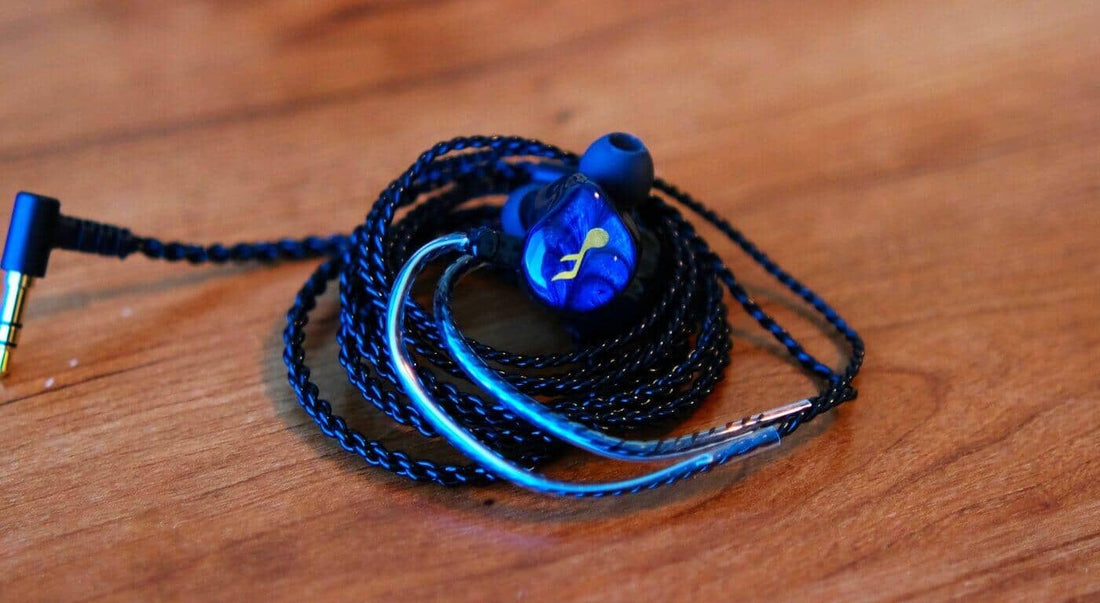
Introduction
FatFreq is a small Singaporean brand that would have flown under the radar for me were it not for Crinacle. During my visit to Singapore, he’d just received his own demo unit of their unreleased Maestro Mini and said, “I think you’ll like this one”. Suffice to say it left an impression on me, so much so that I eventually reached out to FatFreq for my own unit when I returned to the states! Now, the Maestro Mini itself is a humble 1DD/2BA setup that’ll set you back $600 SGD (~$430 USD). It’s no secret that I’m partial to these lower-driver count setups, so let’s take a closer look at how the Maestro Mini performs on the chopping block.
This unit was provided for review by FatFreq. As always, what follows are my honest thoughts and opinions to the best of my ability.
Source & Drivability
All critical listening was done off an iBasso DX300 and iPhone 13 Mini with lossless files. The stock 3.5mm cable and silicone ear tips were used. The IE600 takes a moderate amount of power to drive, but I had no issue hitting my usual listening volumes (~70dB). If you'd like to learn more about my listening methodology, test tracks, and general beliefs in audio, then I would encourage you to check out this page.
What’s in the box?
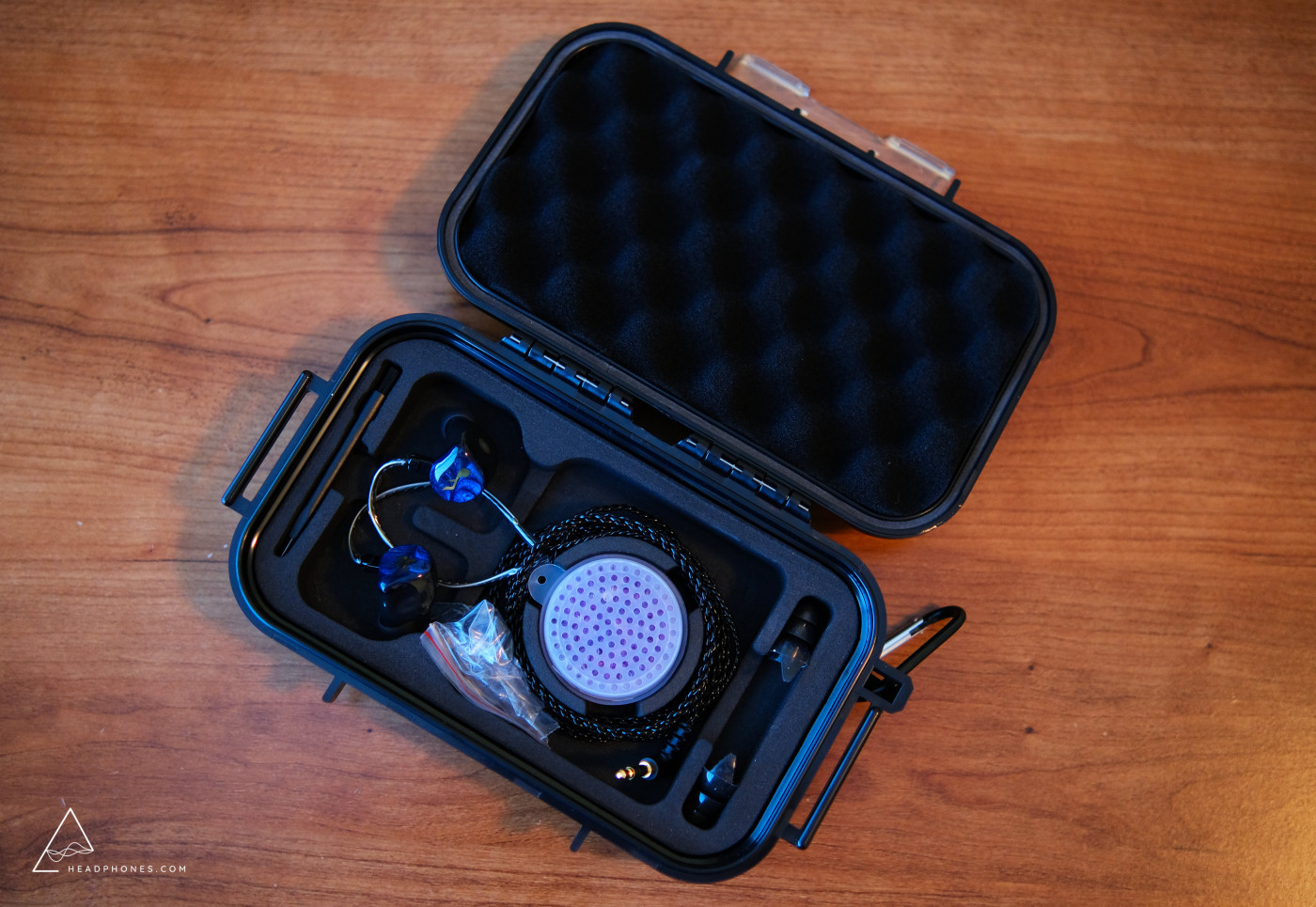
- Fatbox Carrying Case
- 2-Pin Cable
- Silicone ear tips s/m/l
- Cleaning tool
- Earplugs
The FatBox carrying case is FatFreq’s solution to protecting their IEMs. It uses a Pelican-esque case with custom foam inserts at the top and bottom. At the center of the bottom insert is a peg containing desiccant and that an IEM’s cable can be wrapped around for storage. To the left are cutouts for the earphone’s left and right sides and a cleaning tool, and to the right are slots for earplugs. I would say the case’s overall quality is decent. It’s clearly not built as well as the real-deal, and another consideration of note is that foam inserts are more susceptible to being marred over time which isn’t an issue with rubber like in the Pelican cases. To lend context, this is a ~$60 USD case and I have seen offerings (such as from 64A) that use legitimate Pelican cases and custom foam inserts for the same price.
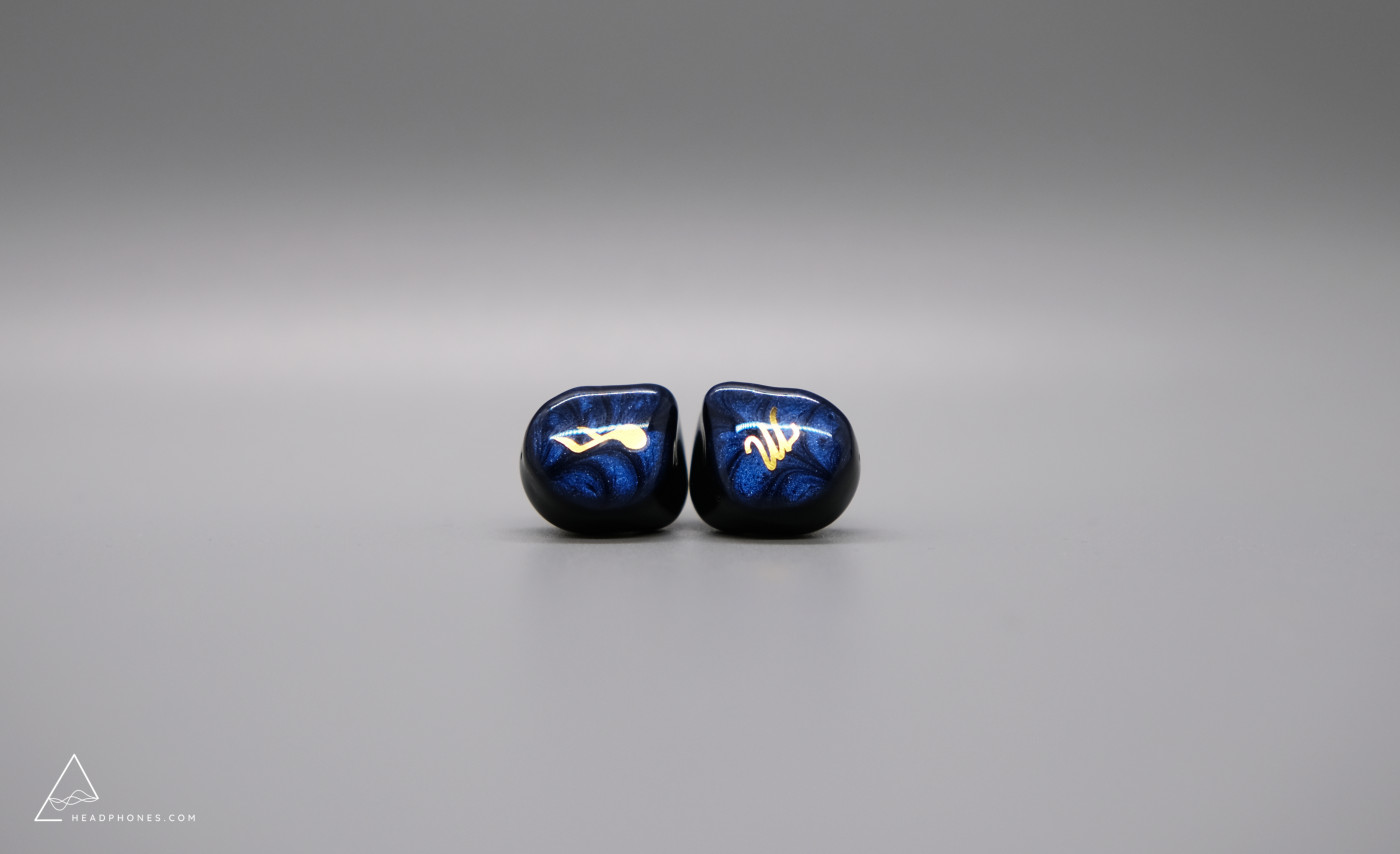
Moving to the Maestro Mini. The Maestro Mini is a smaller IEM that I had no issues achieving a comfortable fit with (bear in mind this is subjective to the individual). However, I did observe that minor driver flex - a harmless crinkling of the driver - was occasionally present while moving around. The Maestro Mini also lacks a dust filter at the nozzle, so you can see the components inside. I noticed that the left nozzle had traces of glue residue or dust residing in plain view which was somewhat disconcerting. On the bright side, the blue faceplates of the Maestro Mini are quite pleasing with a deep swirl and lighter sparkle that captures the eye’s attention. I observed no quality issues on this front.
Sound Analysis
The neutral with sub-bass boost tuning isn’t exactly a new concept. In fact, the last couple years have seen the style of tuning become increasingly saturated with the advent of releases such as the Symphonium Helios, ThieAudio Monarch, SoftEars RSV, and Moondrop B2: Dusk. The rationale behind this tuning style is simple: given a bass shelf doesn’t infringe on midrange frequencies - which often happens when a tuning has excessive mid-bass presence - an IEM can actually get away with a lot of bass without sounding muddied. The aforementioned IEMs, for example, all have not-so-subtle ~10dB of bass boost.
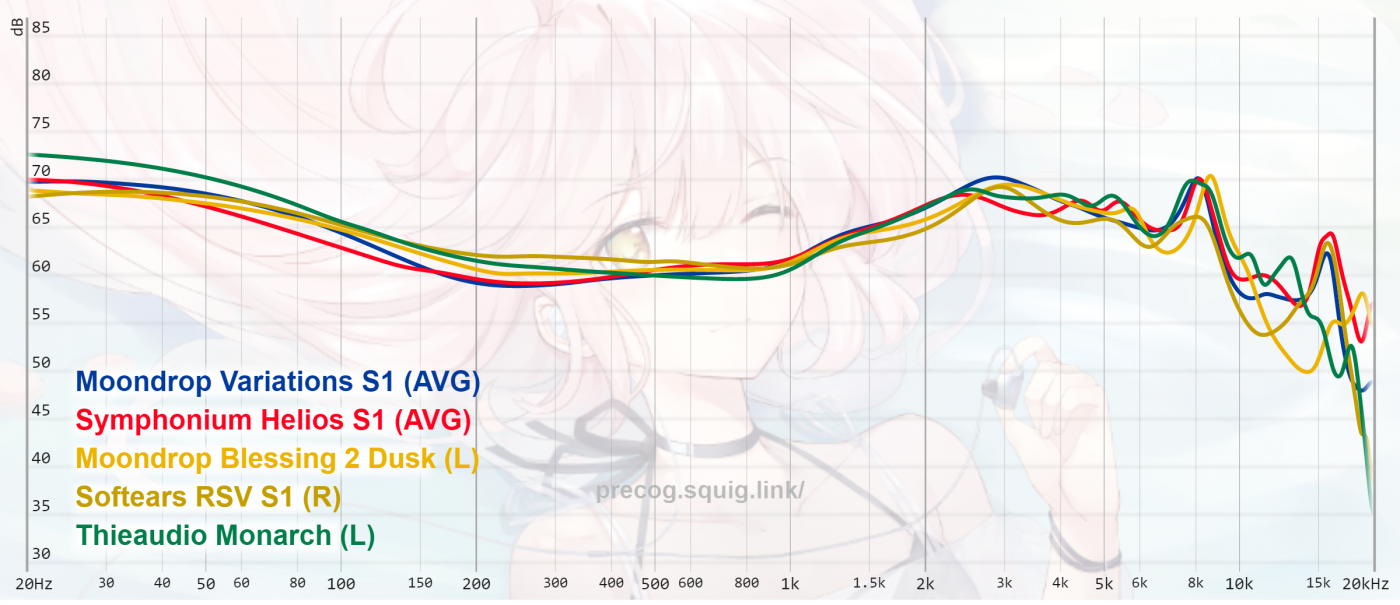
But then you have this:
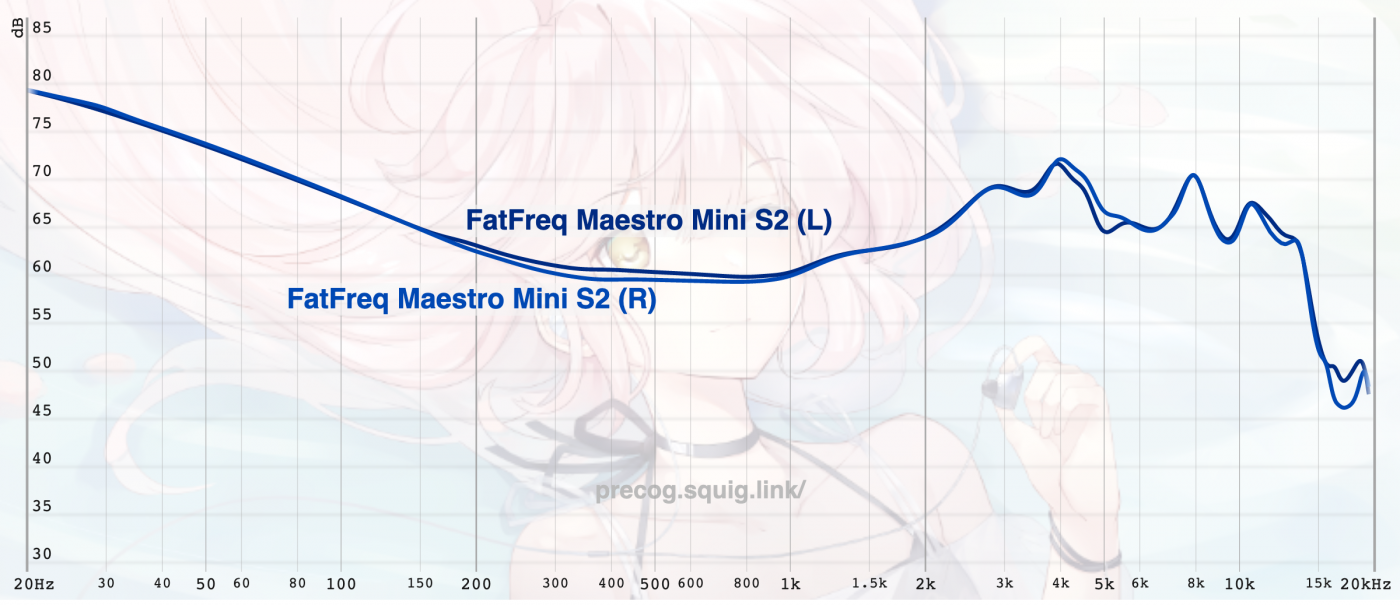
What FatFreq has done here is unprecedented. They’ve concentrated nearly 20 decibels of pounding bass under 300Hz in an effort to create something close to a subwoofer-like experience. And I’d say it mostly works too. While the Maestro Mini’s dynamic driver doesn’t have the sense of slam and slight disconnect that I’d associate with a true subwoofer, it can certainly rumble and tickle your ears like there’s no tomorrow. There’s also little sense of the “stretched” quality to transients - ergo lack of bass texture - that I’ve come to associate with well-known basshead IEMs like the Legend X. This basically sounds like a quality DD cranked up to 11, an absolute bass bath.
The Maestro Mini’s midrange sounds vanilla in that no egregious liberties have been applied in an effort to offset the gobs of bass. This certainly yields a more “distant” midrange presentation wherein you’ll find yourself raising the volume to hear the midrange relative to the bass; I found this most apparent with vocalists like Joe Nichols on “Sunny and 75” when he’s running through less challenging lines that aren’t pushing his vocal range. The flip side of this - the good part - is that it means that midrange timbral qualities are preserved. Bass-heavy, female-vocal tracks that are a little artificially boosted in the upper-midrange, such as Youha’s “Island”, also tend to sound great on the Maestro Mini to my ears.
A concern that becomes especially relevant when you have an IEM this bassy is maintaining perceived treble presence. There are a couple of ways to address this. The “lazy” method usually involves strongly boosting the lower-treble regions (which creates the stereotypical V-shaped tuning); however, this tends to create the impression of “fake” detail because it’s not accurate relative to real-life. I think the way the Maestro Mini addresses this issue is better: boosting the 10-15kHz regions. It’s interesting because most IEMs don’t have much presence in these regions; this is reflected on graphs. And while the Maestro Mini might look rolled-off on paper, you can also have the treble nosedive after ~16kHz because, realistically, most people can’t hear much after this point and they’ll assume it’s a product of the bass quantity masking those last legs of extension.
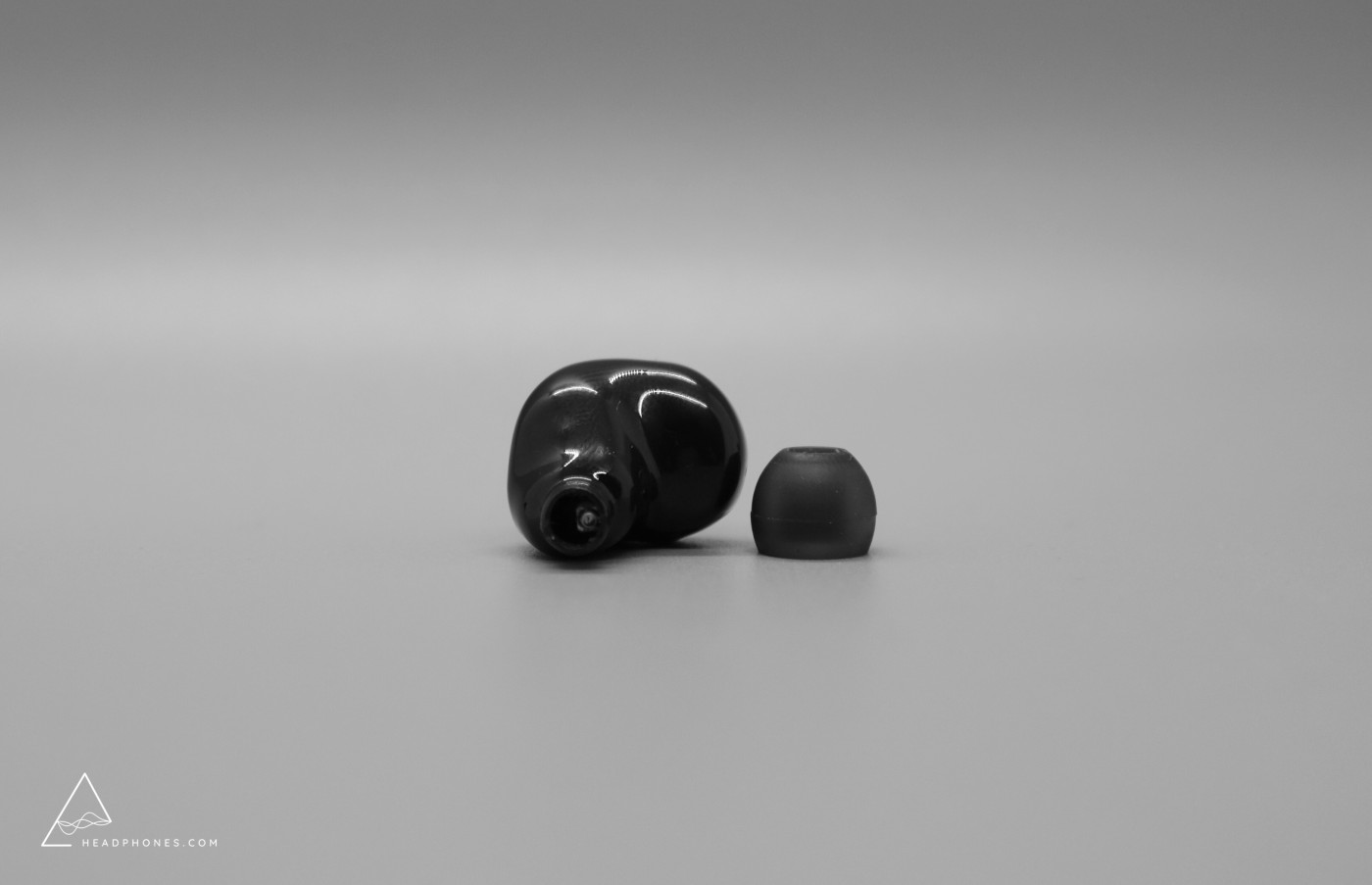
Here’s the bottom line if I’ve lost you geeking out on the squiggles: the Maestro Mini doesn’t have the best treble response, but it takes a fairly elegant approach to circumventing the traditional limitations to treble response of such a bass-y IEM. Its treble sounds present, non-peaky, and extension is adequate. In an effort to achieve this, the BA tweeter is also mounted directly at the nozzle of the IEM (akin to the 64A IEMs) in contrast to the traditional approach of firing the tweeter through a tube.
Technical Performance
Generally, I would place the Maestro Mini at around a “B+” for technicalities. Detailing can come across a bit smeared over in the midrange due to the sheer amounts of bass (and, again, the perception of the midrange being pulled back further in the mix). But surprisingly, imaging on the Maestro Mini is not bad at all. It’s not the most precise set for discerning instrument positions; however, there’s a respectable sense of soundstage ambiance and of being able to “feel” the instruments on the stage. Perhaps this can be attributed to the contrast between the more recessed midrange and the elevated response from 10-15kHz.
Dynamics on the Maestro Mini are also solid. There is a sense of the midrange being more downwards-compressed for gradations in volume; however, the bass is quite bouncy and the treble response does not seem to exhibit typical “BA timbre” characteristics - mostly the gritty quality to decay - outside of sounding somewhat stagnant for, again, gradations in volume. To enter even more wishy-washy territory, the treble subjectively doesn’t really sound “sweet” or have a positive characteristic I’d assign to it for dynamic contrast outside of being inoffensive.
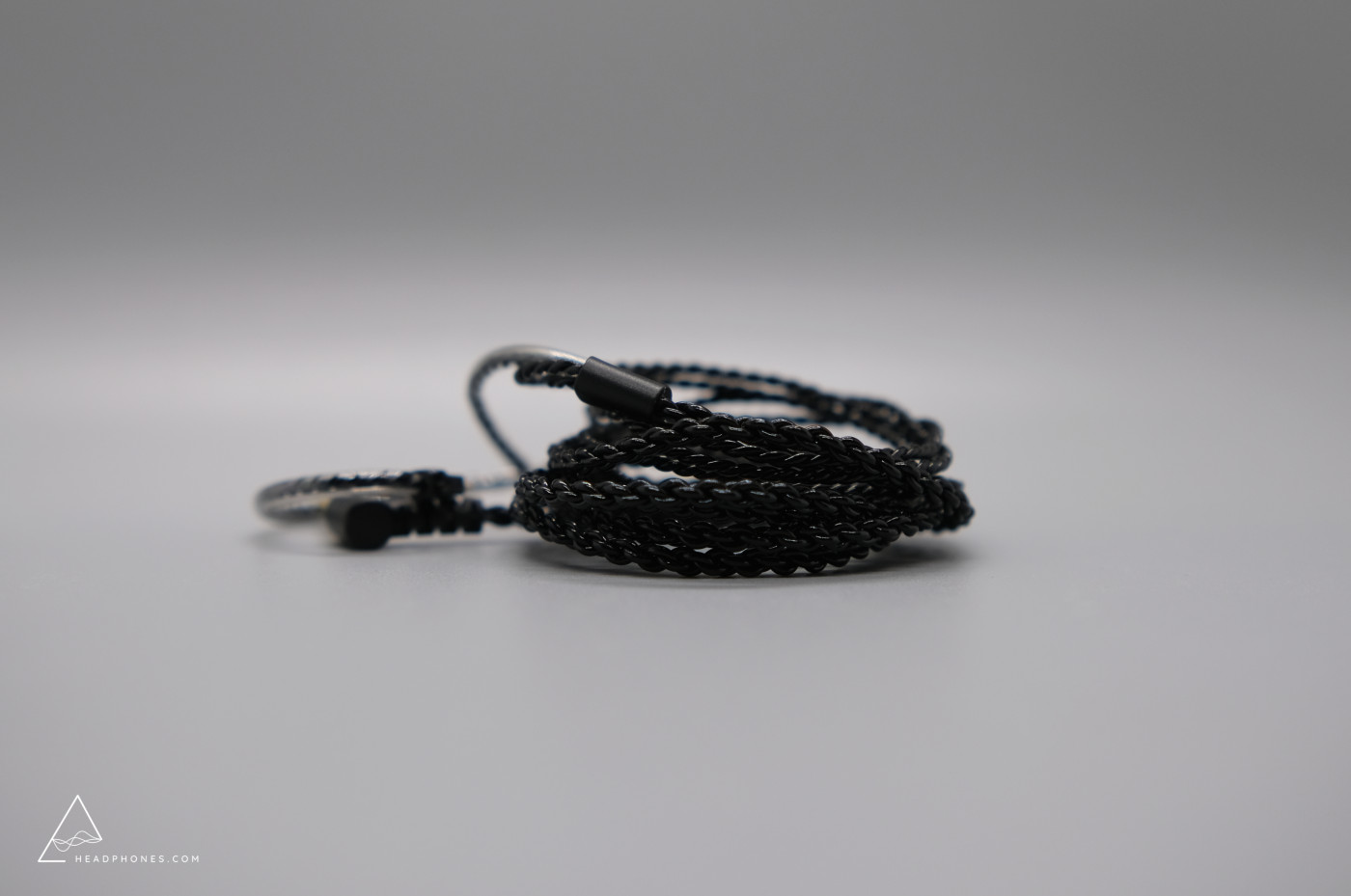
Assessment of Value
The Maestro Mini presented a unique opportunity to take a stab at perceived value of sound quality, as I was not told the price when it was sent out. That in mind, I would’ve placed the Maestro Mini around the ~$500 price point which, incidentally, is fairly consistent with the $430 price I was told later. Putting my precognition skills to work, heh.
As for comparisons…let’s be real, there isn’t really any other IEM on the market with this type of bass boost. Your closest point of comparison might be the Moondrop Variations. By comparison, the Variations is unquestionably a cleaner, more technical listen. But it neither has the bass character that I’d assign to the Maestro Mini, nor does it have the thicker, more relaxed midrange. Go for the Variations for the better IEM on paper, go for the Maestro Mini if you’re an unabashed bass-head and enjoy a smoother sound.
The Bottom Line
The Maestro Mini is a niche listen, but at least it fulfills that niche tastefully which can’t be said for a lot of IEMs this bassy. If you’re willing to sidestep some of the questionable build quality criticisms at $430(for which I have certainly seen better) then I’d say it’s worth giving it a shot. It’s always a pleasant feeling when a small brand pops out with something novel like the Maestro Mini, and now I’m quite interested to see what FatFreq decides to release next!
Watch the video here:
